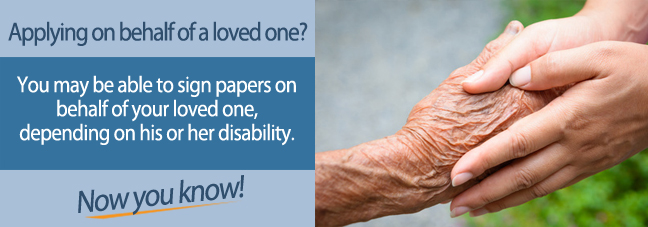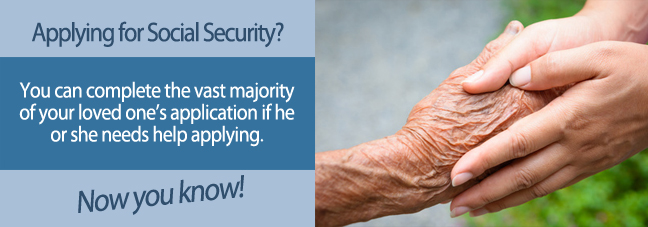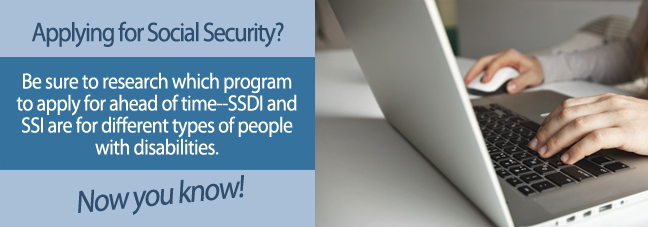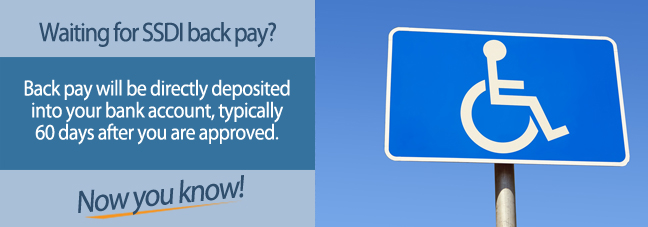The Social Security disability caregiver application involves a caregiver(s) of a friend or family member with a serious illness applying for Social Security disability benefits on their behalf.
As the caregiver to a friend or family member with a serious illness, you can apply for Social Security disability benefits on their behalf. Benefits may be available through one or both of the Social Security Administration’s (SSA) disability programs. Once approved, your family member or friend will receive any back benefits due as well as ongoing, monthly disability payments to help cover everyday living expenses, medical bills, and other costs. And while the SSA does not offer a program for Social Security disability caregiver pay, you could increase your chances and likelihood of getting paid for taking care of the patient by helping them apply for disability benefits.
As their caregiver, you can help your loved one apply for SSDI or SSI. There are two different types of disability benefits programs that you can help your loved one apply for. These programs are important to Social Security caregiver pay because they may help pay for caregiver costs.
SSI Caregiver Allowance
The SSA does not directly pay caregivers. There may be programs through your state or other services to help pay a caregiver.
As a caregiver, you can help your loved one that you're caring for apply for disability benefits. These benefits can then be used by your loved one to pay for their living expenses.
SSI and SSDI Benefits
Disability includes Supplemental Security Income (SSI) and Social Security Disability Insurance ((SSDI)). If the person for whom you’re applying was previously employed, paid Social Security taxes, and had a recent work history (within the last 10 years), then they will likely qualify for SSDI. This is where many people with progressive or adult-onset illnesses will qualify, such as those with Parkinson's disease or early-onset amyotrophic lateral sclerosis (ALS).
Further Reading: What Is SSI?

SSI benefits may be available to your friend or family member, based on his or her financial situation, living circumstances, and other factors. SSI is need-based and, thereby, requires a review of financial details in addition to both personal information and medical records.
Some applicants qualify for benefits through just one program. Those in the most dire financial circumstances may receive benefits through SSI in addition to SSDI. Applicants who have no employment records or no recent work history may get SSI instead of SSDI benefits.
As the caregiver of an adult who is seriously ill, you may need to apply for both programs and discuss eligibility considerations with an SSA representative.
Further Reading: What Conditions Qualify For Disability?
Medical Eligibility for Benefits
Every Social Security disability caregiver application (on behalf of the severely ill patient) is reviewed against listings that appear in the SSA’s Blue Book. Listed disabilities include a range of serious illnesses. Some disabilities listed in the Blue Book include:
For example, Parkinson's disease will medically qualify if the person you're caring for cannot walk without assistance, or perform dexterous movements due to tremors in two or more limbs. ALS and Parkinson's are some of the disabilities that automatically medically qualify for disability benefits.
You’ll want to discuss your Social Security disability caregiver application with the individual for whom you’re applying as well as their doctor. Together, you’ll get an idea of the listing under which your friend or family member may qualify. In turn, this will help you determine whether your friend or family member's existing medical records are sufficient evidence for the Social Security disability caregiver application or if additional documentation must be collected in order to have the strongest application possible.
Although you can complete SSI and SSDI applications on someone else’s behalf (via a Social Security disability caregiver application), he or she will still be required to sign certain documents, unless you are a legal guardian or hold power of attorney for this person. The applications themselves must be signed, in addition to consent forms, which gives the SSA permission to contact doctors and other healthcare providers and to request medical records and other documentation.
If the person you care for cannot hold a pen, it is perfectly acceptable to hold a pen in a mouth to sign a paper. If there is no possible way for the person you care for to sign documents, exceptions can be made and you may be able to sign the final application on his or her behalf.

How Much Is Social Security Caregiver Pay?
This question essentially covers how much can you, as a caregiver, can get paid by Social Security disability benefits.
If you are taking care of a loved one with a serious ailment or a disability, it can be not only time and emotionally consuming, but it can also be financially draining as well.
If your loved one is approved for disability benefits, you may be wondering how much Social Security caregiver pay is. Unfortunately, the SSA does not directly pay caregivers for taking care of a loved one. In other words, the SSA does not have a Social Security disability caregiver pay program.
However, if you are the primary caregiver of someone who is on Social Security disability benefits, you could use that money to help you take care of your loved one.
More specifically, you can use the funds from your loved one's Social Security disability benefits to help cover the costs related to taking care of them. That can include, but certainly would not be limited to, gas to help pay for the costs of driving your loved one, medical bills, prescription medication and basic day to day needs, like groceries.
You could also use those funds from Social Security disability benefits to pay for someone to come and help you take care of your loved one. There are many home healthcare organizations whom you could turn to for help taking care of your loved one, which you can pay for using the funds from Social Security.
If you have any questions on what you can spend your loved one’s Social Security benefits on, you can contact the SSA.
How to Get Paid to Take Care of a Family Member with a Disability
There are many government programs that allow family members of people with disabilities to get paid for caring for them.
One program is called Medicaid Self-Directed Care.
Medicaid Self-Directed Care is a program that lets qualified people manage their own health services. The program also lets them hire family members as caregivers in some states.
There are 12 states that provide family caregiver pay (i.e., pay family caregivers). Those states are Colorado, Kentucky, Maine, Minnesota, New Hampshire, New Jersey, North Dakota, Oregon, Texas, Utah, Vermont, and Wisconsin.
If you live in one of those states, you should check to see how to get paid by the state for taking care of someone. Those states pay any relatives, including spouses, parents of minor children, and other legally responsible relatives to take care of a family member with a disability.
If you have a loved one applying for Social Security disability benefits on behalf of a loved one with a disability as their caregiver, you cannot get paid directly from the SSA.
The SSA does not pay caregivers to take care of their loved ones who are on Social Security disability benefits (SSI or SSDI).
You could get paid as a caregiver to take care for a loved one with a disability, though through other programs there are other ways in which you could get paid taking care of a loved one.

Collecting Required Records and Other Information
You’ll need to gather as many details as possible before applying for benefits, and the Disability Checklist, which is part of the Adult Disability Starter Kit, will help you know the types of records and information you’ll need. If you apply online for SSDI, then the online application checklist will help you as well. Necessary documents include past employers, tax history, and current financial statements.
Applying for Social Security Benefits
The SSDI application is available through the SSA’s website. You can also use the online application to begin your SSI claim too.
If your loved one cannot apply on their own, you can fill out their application for them (i.e., complete a Social Security disability caregiver application). The easiest way to apply for disability benefits is online through the SSA’s website and all applications can now be submitted online.
Before you apply for disability benefits, it is crucial that you make sure you have all of your loved one’s paperwork and medical records in order.
After you submit the initial application, it will usually take the SSA between 3 and 5 months in order to get back to you with a decision. You can call the SSA toll-free at 1-800-772-1213 to schedule an appointment or to discuss interview options.
If you are a caregiver and applying on behalf of a loved one with an illness, get a free case evaluation today.
Additional Resources
- A Disability Lawyer Can Increase Your Likelihood of Getting Approved for Disability Benefits
- What Conditions Qualify For Disability?
- SSDI Application
- SSDI
- SSI
- Disability Lawyer
- Can You Get Disability If You Haven't Worked Enough
- How Long Does Disability Last?
- Disability Claims Process
- How Do I Speed Up My Disability Claim?
- Blue Book
- What Are the Non-Medical Requirements Needed to Earn SSDI?
